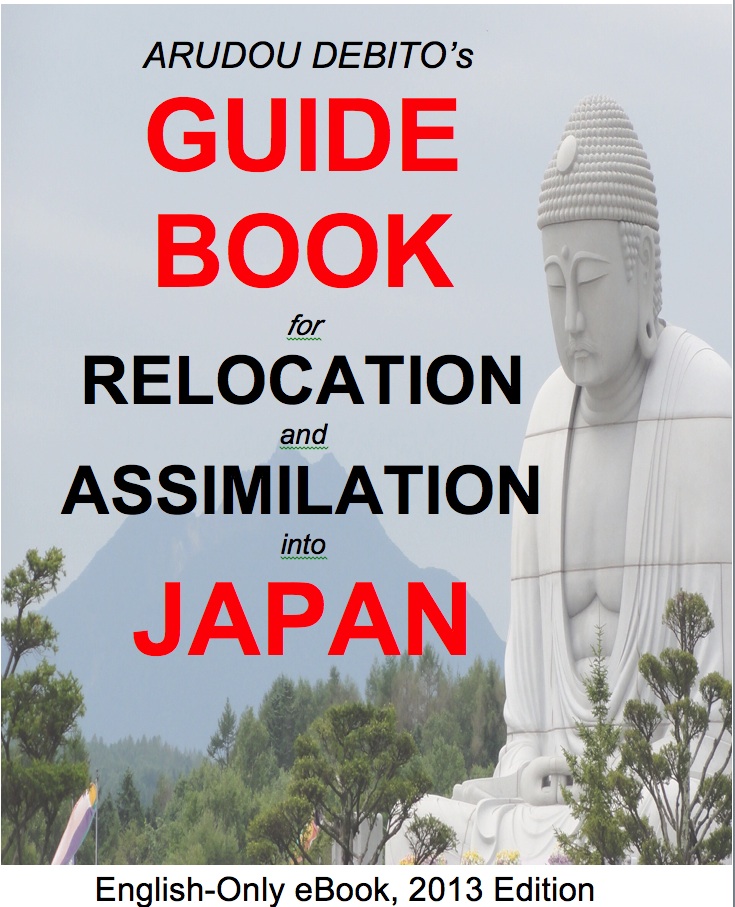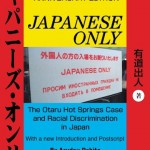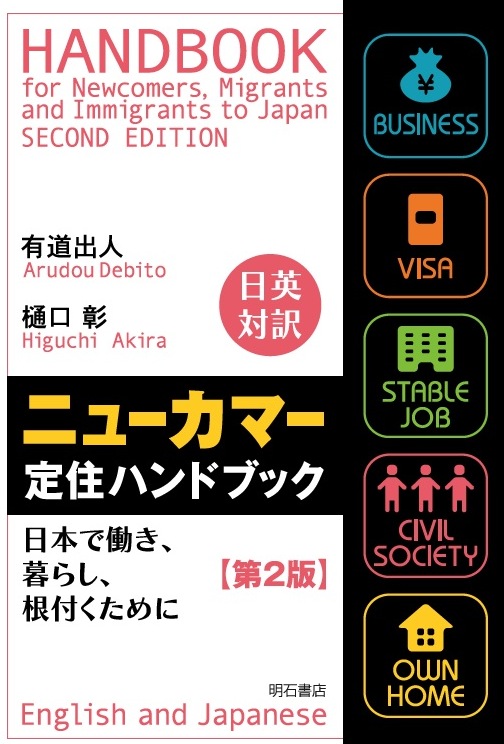mytest
Books, eBooks, and more from Debito Arudou, Ph.D. (click on icon):





![]()


UPDATES ON TWITTER: arudoudebito
DEBITO.ORG PODCASTS on iTunes, subscribe free
“LIKE” US on Facebook at http://www.facebook.com/debitoorg
https://www.facebook.com/embeddedrcsmJapan
http://www.facebook.com/handbookimmigrants
https://www.facebook.com/JapaneseOnlyTheBook
https://www.facebook.com/BookInAppropriate
If you like what you read and discuss on Debito.org, please consider helping us stop hackers and defray maintenance costs with a little donation via my webhoster:

All donations go towards website costs only. Thanks for your support!
Visible Minorities: Torture and Murder in Japan Detention Centers
Shingetsu News Agency, June 20, 2022, by Debito Arudou
SNA (Tokyo) — News Headline: “Prosecutors drop case over death of detained Sri Lankan woman.”
In August 2020, a Sri Lanka national named Ratnayake Liyanage Wishma Sandamali was arrested for overstaying her visa, and detained in a Nagoya Immigration Detention Center. She had arrived in Japan in 2017, but her student visa was cancelled in 2019 because she couldn’t afford tuition fees. While in detention, she opted not to return to Sri Lanka, reportedly due to reduced flights during Covid and an abusive boyfriend back home.
During her seven months in custody, however, Sandamali’s health steadily declined due to a stress-induced stomach condition. According to the Straits Times, Sandamali “was vomiting blood in her final days, and was so weak that she had no control of her arms and legs. The immigration authorities allegedly turned a blind eye to medical expert advice to put her on an intravenous drip or to grant her provisional release to ease her stress. A report by public broadcaster NHK suggested that officials tend to suspect malingering for minor illnesses in their reluctance to grant provisional release.”
That’s a questionable decision, since she had lost 20 kilograms from her small frame over seven months—hard to dismiss as mere “malingering” or “minor illness.” And her decline was not sudden: According to the Asahi Shinbun, she had notified her jailers from mid-January about nausea and lack of appetite. Nineteen days before her death, a urine test indicated she was in a state of starvation. The New York Times noted that in her final days she could ingest little more than water, sugar, or morsels of bread, and could barely make a fist or speak. Yet she was again refused provisional release for hospital treatment.
On March 6, 2021, Sandamali died in her cell, aged 33. An August 2021 postmortem probe by Japan’s Immigration Services Agency ruled that Sandamali had been “mistreated” by the Nagoya Regional Immigration Services Bureau, formally reprimanding the bureau’s director and three other supervisors for not reporting her requests for examination and treatment to an outside doctor.
But overlooked was cruelty of her captors. According to Nikkei Asia, “one immigration officer allegedly mocked Wishma when she was unable to swallow her drink,” and the Mainichi Shinbun reported that other Immigration officers misled a doctor about her condition two days before her death, dismissing her illness as merely “psychosomatic.”
By the time Sandamali’s family received her body, “her skin was wrinkled like an old person, and it was stuck firmly to her bones.” In November 2021, Sandamali’s family lodged a criminal complaint against officials at the Nagoya facility, accusing them of murder through willful negligence.
Unfortunately, as noted above, last week the Nagoya District Public Prosecutor’s Office dropped the Sandamali case, citing an inability to establish criminal liability or even a cause of death, blaming it on “multiple factors.”
Multiple factors indeed. Sandamali’s case is not unprecedented. According to CNN, since 1997 at least 27 foreign detainees have died in Japan’s Immigration detention centers (aka “Gaijin Tanks,” because they detain foreigners only).
The main factor here is the cruel and unusual punishment by public officers, expressly forbidden under Article 36 of the Constitution.
Yet nobody has ever been held criminally liable for foreigner deaths in detention. That’s what makes Japan’s Gaijin Tanks so cruel and unusual.
Let’s consider a few more cases, then talk about the system that killed them…
Read the rest at https://shingetsunewsagency.com/2022/06/20/visible-minorities-torture-and-murder-in-japan-detention-centers/
======================
Do you like what you read on Debito.org? Want to help keep the archive active and support Debito.org’s activities? Please consider donating a little something. More details here. Or if you prefer something less complicated, just click on an advertisement below.
5 comments on “My SNA VM35: “Visible Minorities: Torture and Murder in Japan Detention Centers” (June 20, 2022) including the Sandamali, Suraj, Fernando, Okafor, Ekei etc. Cases.”
IMHO, this is one of your best articles, Debito. It needed to be said, and needs to be said often.
You said it as well as anyone could.
Thank you.
— Thank you back, JBB.
‘Go home or die’.
Well, given the actual number of deaths, it’s policy, isn’t it?
Great article on an important issue. It also needs to be remembered that the deaths of detainees are only the tip of the iceberg. The needs of detainees are routinely neglected, solitary confinement is not unheard of and even if they are released on a karihomen or ‘provisional release’, they can’t provide for themselves and have the threat of getting detained again looming over them. Some find themselves in such limbo for decades.
The cruelty is systemic and, I daresay, deliberate. Nothing puts people in their place like intimidation and the threat of violence. Add this to the common belief that “you wouldn’t be detained if you hadn’t done anything wrong”, which you mention, along with deeply entrenched xenophobia and the nationalistic belief that Japanese people are, by default, kind and well-mannered while NJ are tolerated outsiders at best and dangerous intruders at worst. These give very little hope things will change as too few members of the public strongly believe they should.
Dichotomy denial and cognitive dissonance of a nation-
” kind and well-mannered while NJ are tolerated outsiders at best and dangerous intruders at worst”
It doesn’t seem particularly kind to consider NJs in this manner. Tom Conti’s character in “Merry Christmas Mr. Lawrence” comes to mind; he is only mildly beaten as he speaks Japanese, while the other POWs suffer random yet regular beatings.
I always felt I was walking on a tightrope of honored/tolerated guest one misstep away from a harsh berating. For actual prisoners I am sure the similarity is even stronger.
Regarding unaccountability at Japan’s Gaijin Tanks, there’s been a recent development in the Andre Kussunoki case.
What is interesting is how the news was reported.
Kyodo ran the story with this title:
State told to pay damages for detainee’s injuries at Japan immigration
Whereas Mainichi went with this title:
入管のブラジル人「制圧」は違法 国に賠償命令 東京地裁判決
In actuality, the English language title is inaccurate — the damages (a grand sum of ¥100,000 / $734 that the judge deemed to be “appropriate”!) were awarded, not for the plaintiff’s injuries, but for unlawful restraint by immigration officials. This fact can be confirmed in the article itself:
“The Tokyo District Court ruled that the physical restraint used by immigration officials on the detainee was unlawful.”
…and…
“Kussunoki claims he sustained injuries to his left shoulder, but the court said it cannot determine if such injuries were caused by the officials during the incident.”
The Japanese language title, by comparison, correctly reports that the state was ordered to pay compensation due to ‘unlawful restraint’.
In any case, the unaccountability at Gaijin Tanks continues — despite evidence of the incident being captured on video, the public is supposed to believe that the shoulder injuries were caused, not by excessive use of force on the part of immigration officials, but rather some other means (arm wrestling perhaps?). Also, in the absence of testimony from say, a medical professional specializing in shoulder injuries, it is only natural that the court cannot determine if the injuries were caused by the incident.
One more thing: Kyodo used a factually incorrect title for this story. I am skeptical that this was due to sloppy journalism; the cynic in me believes this was done intentionally (e.g. to make the story more palatable to an English-speaking audience).
— Good sleuthing, JK! Thanks.